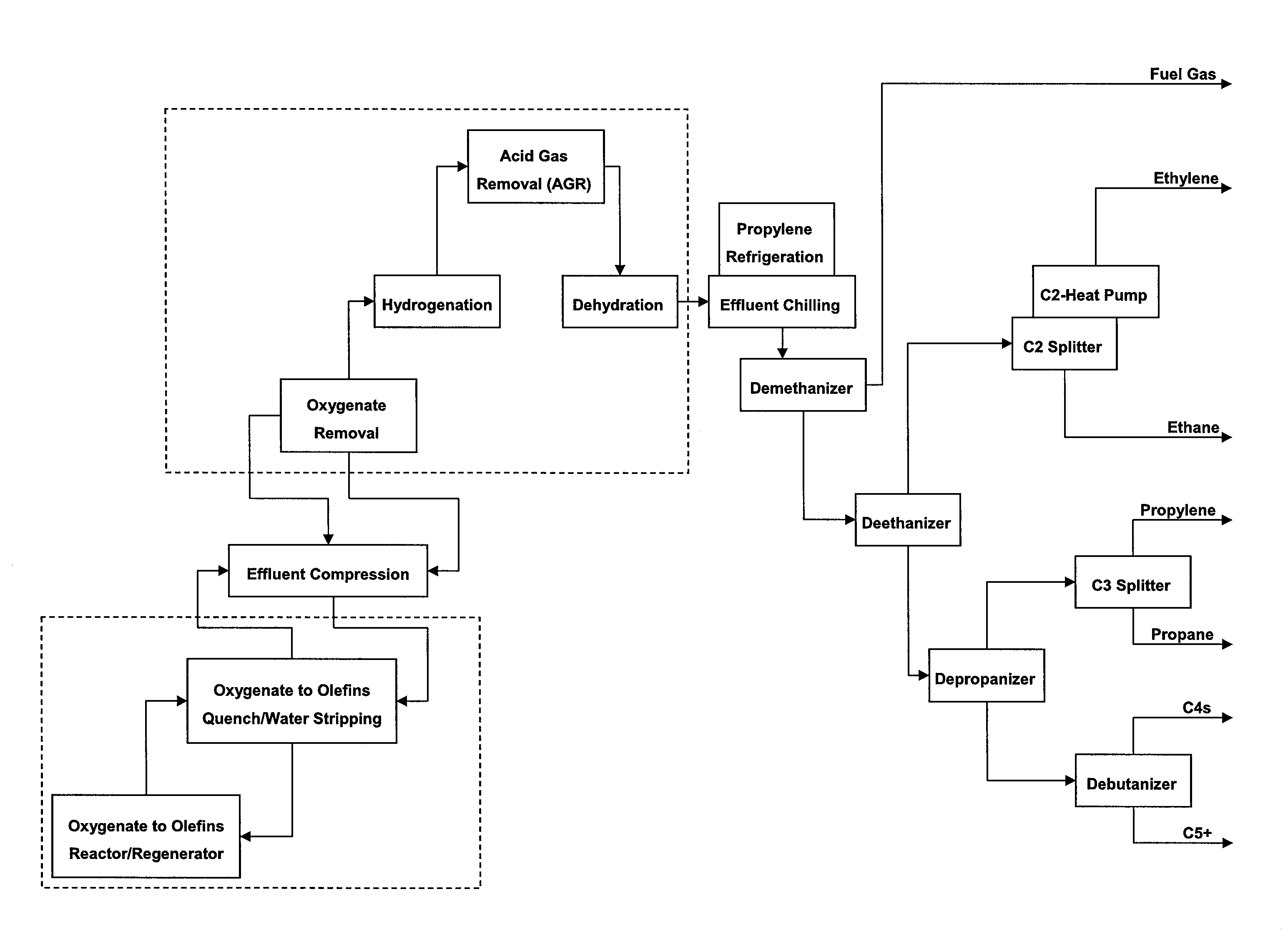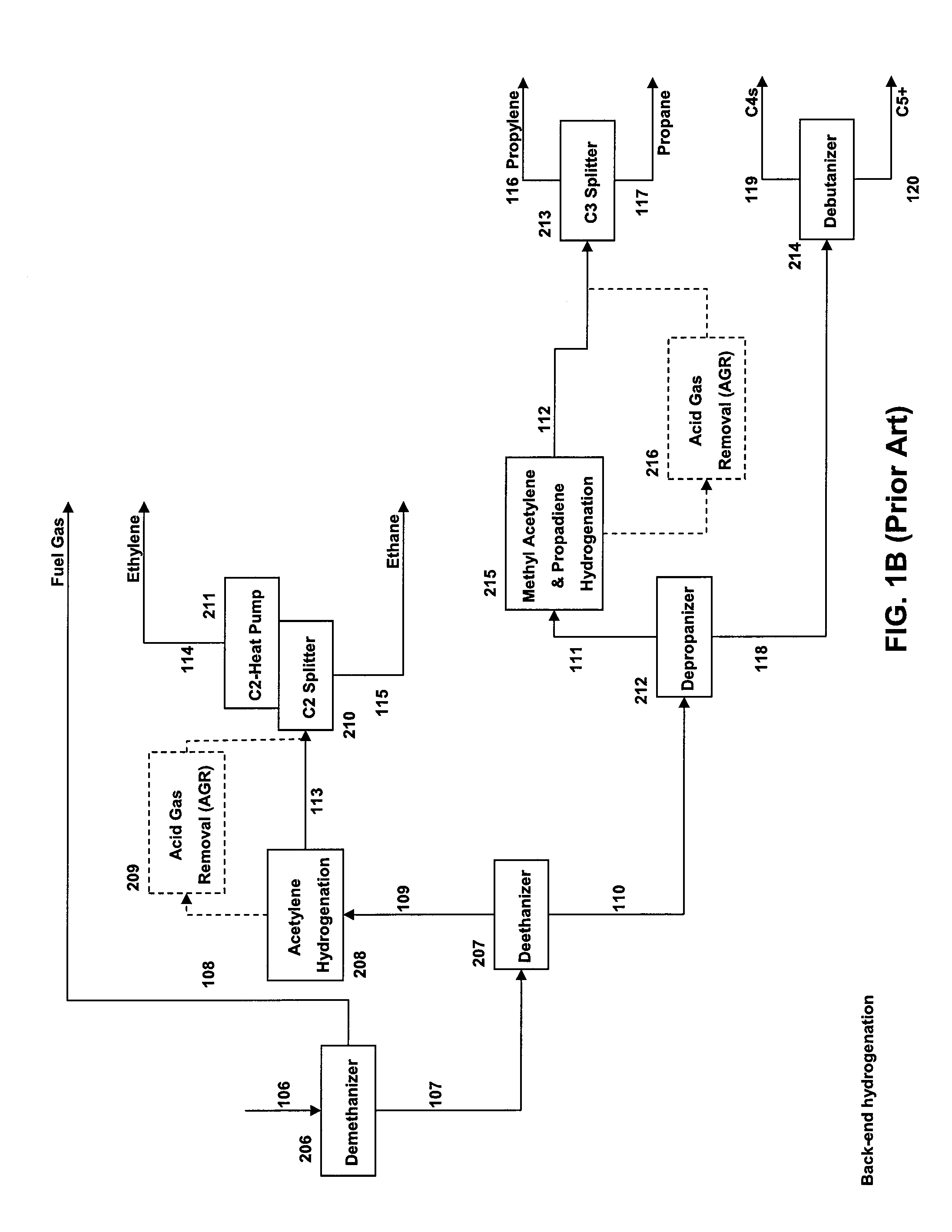Method for contaminants removal in the olefin production process
a technology of olefin and production process, which is applied in the field of apparatus and reactor system for recovering polymer grade olefins, can solve the problems of inability to economically justify the separation and use of copper catalysts, too slow activity of copper catalysts, and inability to achieve catalyst cycle time in undesired shortness
- Summary
- Abstract
- Description
- Claims
- Application Information
AI Technical Summary
Benefits of technology
Problems solved by technology
Method used
Image
Examples
Embodiment Construction
[0026]The present invention provides a method and reactor system for hydrogenating acetylenes present in the olefin stream derived from the following streams, alone or in combination: petroleum fluid catalytic cracking (FCC) process and oxygenate-to-olefin process in an olefin production plant before distillation steps. According to one specific embodiment of the invention, the stream from the oxygenate-to-olefin reactor is used. According to another specific embodiment of the invention, the oxygenate-to-olefin reactor is the methanol-to-olefin (MTO) reactor.
[0027]In one specific embodiment of the present invention, as shown in FIG. 2, the source such as, for example, the MTO reaction product in a line 101 is compressed in a compressor 201, preferably a multi-stage compressor with two or three stages. In this invention, the contaminants, particularly including acetylenes, are removed from the provided olefin stream at low pressure. An advantage of using a low pressure separation is ...
PUM
| Property | Measurement | Unit |
|---|---|---|
| Temperature | aaaaa | aaaaa |
| Temperature | aaaaa | aaaaa |
| Fraction | aaaaa | aaaaa |
Abstract
Description
Claims
Application Information
 Login to View More
Login to View More - R&D
- Intellectual Property
- Life Sciences
- Materials
- Tech Scout
- Unparalleled Data Quality
- Higher Quality Content
- 60% Fewer Hallucinations
Browse by: Latest US Patents, China's latest patents, Technical Efficacy Thesaurus, Application Domain, Technology Topic, Popular Technical Reports.
© 2025 PatSnap. All rights reserved.Legal|Privacy policy|Modern Slavery Act Transparency Statement|Sitemap|About US| Contact US: help@patsnap.com



